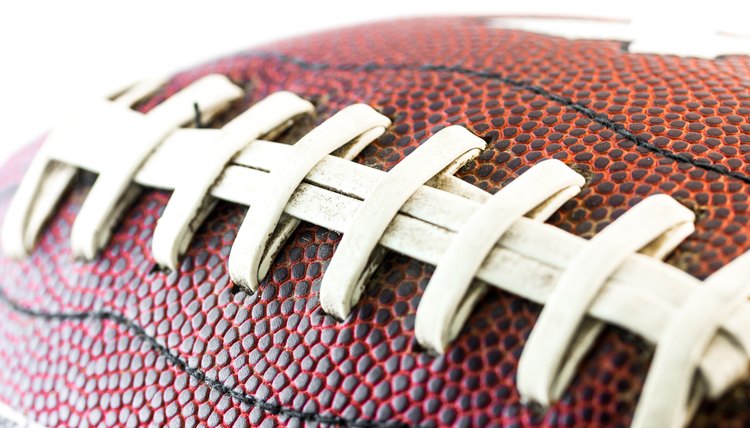Why Are the Laces Important on a Football?

The laces of a football are an iconic image in the modern-day sport. Laces have always been important to the game, but their role has changed over the years as advancements have been made in both the construction of the ball and style of play. Today, this small strip of white on the side of the football is one of the sport's distinguishing characteristics.
Traditional Function
Originally, a football's laces were a necessary component of the ball's construction -- the laces helped tie the leather tightly around the internal bladder. The laces were a thick stitching designed to endure the abuse of being squeezed, kicked and thrown during football games.
Present-day Function
Laces are no longer a necessary part of the football's construction as they once were -- footballs can be stitched together without the use of bulky laces. But the laces haven't remained just for novelty purposes: They now serve an important role in certain aspects of a game.
Quarterback Use
The laces play a pivotal role in the passing game -- without them, long, accurate passes would be very difficult to achieve. Most quarterbacks place some of the fingers of the throwing hand on the football's laces. This gives them more grip on the ball when throwing, and it also enables them to place a tight spiral on the ball -- the laces are the last part of the football touched on a throw, and the action the fingers place on the laces causes the football to rotate tightly through the air. Because passing is such a fundamental part of modern football, laces are a necessity.
Effect on Kicking Game
If you've ever heard the term, "laces out," it refers to the way a football should be kicked. A kicker's foot striking the laces of the ball can result in an erratic kick that goes off to the side, out of the kicker's control. Consequently, punters and place-kick holders immediately catch the ball and rotate the laces so that they face in the direction opposite of where the kicker's foot will contact the ball. This eliminates the risk of the laces causing an errant kick.
References
Writer Bio
Jonathan Croswell has spent more than five years writing and editing for a number of newspapers and online publications, including the "Omaha World-Herald" and "New York Newsday." Croswell received a Bachelor of Arts degree in English from the University of Nebraska and is currently pursuing a Master's of Health and Exercise Science at Portland State University.
